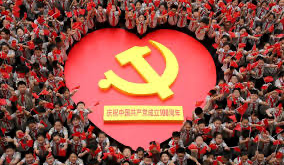If one examines the long path from the end of China’s disastrous “cultural revolution” in the 1970s to China’s 2020 modern miracle of eliminating poverty for 800 million Chinese, many lessons can be learned. China’s commitment to science and building infrastructure were two essential ingredients for this accomplishment. William Jones discusses this interesting history in his article below,”China’s Long March Out of Poverty”.
China Employs Hamilton’s Principles of Credit for Railroads
China’s exciting announcement of its plan to increase the pace of development of maglev and its high-speed rail network, is based on its assurance that it knows how to implement that, and to finance it on top-down principles of the type proposed by Alexander Hamilton.
China announced its plans to build a system of 600 kph (373 mph) maglev vehicles, after it successfully conducted its maiden test run of a maglev vehicle at a test track at Tonji University in Shanghai on June 21. Though the train-set did not run at top speed of 600 kph, but at a lower speed, various important features were tested. Prototype vehicles are approved for construction in 2021, and up to nine new maglev lines, totalling over 1,000 km (600 miles), are planned for the future.
Equally impressive, China’s plan to double its existing 35,000 km of high-speed rail already in operation, to 70,000 km by 2035, shows how a Confucian/Hamiltonian economy actually works. Based on estimates by the Lange Steel Information Research Center in Beijing, reported by the Wall Street Journal, China would have spent $180 billion for 35 approved railway projects in 2019, most of them high-speed rail, launching the next phase of HSR development.
In the first half of 2020, according to the ( Aug. 13 China Daily), China invested $207 billion in combined railway, highway, waterway and civil aviation infrastructure, of which $46.9 billion was in railways. China’s transportation infrastructure investment alone, is 5-10 times that of every country on Earth. Featured in China’s railway investment is a new, 1700 km high-speed rail system between Chengdu, Sichuan and Lhasa, Tibet; high-speed rail in landlocked Shaanxi Province, etc.
China finances the rail and other critical infrastructure, through two methods of directed credit: China’s four largest state-owned commercial banks—the Industrial & Commercial Bank of China, the Bank of China, the Agricultural Bank of China, and the China Construction Bank—make ample loans directly to the China Railway company, the China Railway Rolling Stock Corporation (CRRC), which builds the rail equipment, etc. This is overseen by China’s three “policy banks.”
Second, the national government and local governments purchase bonds issued by China Railway Corporation, CRRC, and so forth.
China has announced its new rail construction program. The government plans to build 200,000 km of rail by 2035, about 70,000 of which will be high-speed rail. All cities with a population of 200,000 or more will be connected by rail, and all cities with 500,000 people or more will be connected by high-speed rail. China is also working on the next generation maglev train that could travel at speeds of 600 kph.
Lawrence Freeman is a Political-Economic Analyst for Africa and outspoken opponent of the current policies of neo-colonialism. He is also a highly respected researcher, writer, and speaker on a variety of topics concerning Africa.
Source: Modernghana.com
 Africa -China Review Africa -China Cooperation and Transformation
Africa -China Review Africa -China Cooperation and Transformation
